Picture this: It’s 6 PM, dinner needs to happen, you have three work emails marked “urgent,” and your toddler is having a complete meltdown because you won’t let them climb the bookshelf. So you do what 74% of parents do—you hand over the iPad. And then? The guilt hits harder than your child’s tantrum.
If you’ve ever felt like a “bad parent” for using screens as a survival tool, you’re not just normal—you’re part of a silent majority drowning in unnecessary shame. Recent research reveals that nearly 3 out of 4 American parents feel guilty about their child’s screen time, with 48% experiencing intense guilt that’s actually damaging family relationships.
But here’s the truth no one’s telling you: the guilt is worse for your family than the screen time itself.
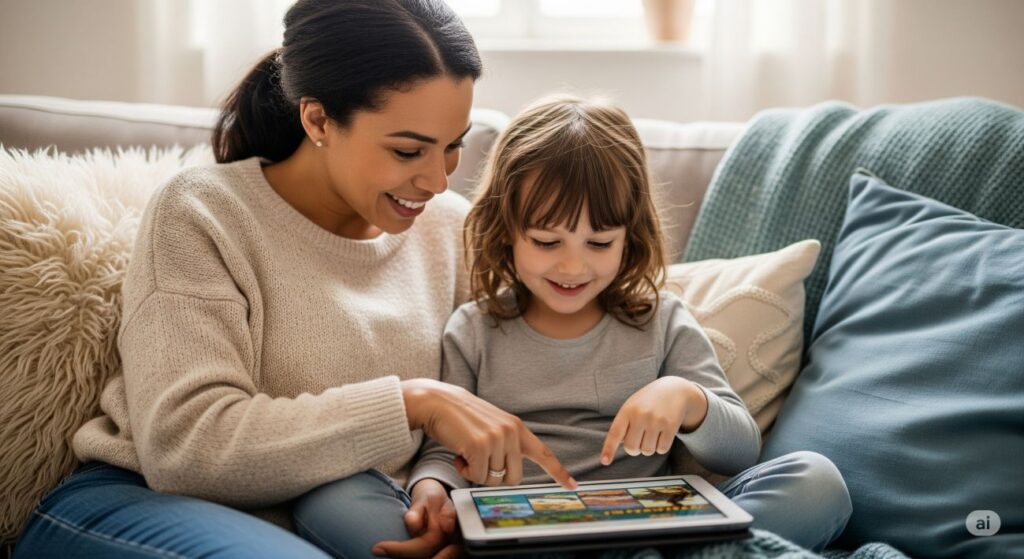
Table of Contents
The Shocking Reality of Parental Screen Time Guilt
Dr. Nathan Walter’s groundbreaking research at Northwestern University uncovered something that should make every parent breathe a sigh of relief: parental guilt about screen time is creating more stress than the actual screen time.
In a comprehensive study of 859 parents, researchers found that:
- 74% of parents feel guilty about their child’s screen time use
- 60% feel guilty even when screen time serves a practical purpose
- Parents who experience screen guilt report higher stress levels
- That stress directly impacts parent-child relationship satisfaction
- The guilt actually predicts future stress, not the other way around
“The guilt was increasing stress, not the amount of screen time,” explains Dr. Walter, whose own parenting journey sparked this research when he felt like a hypocrite teaching about media effects while struggling with his own kids’ screen use.
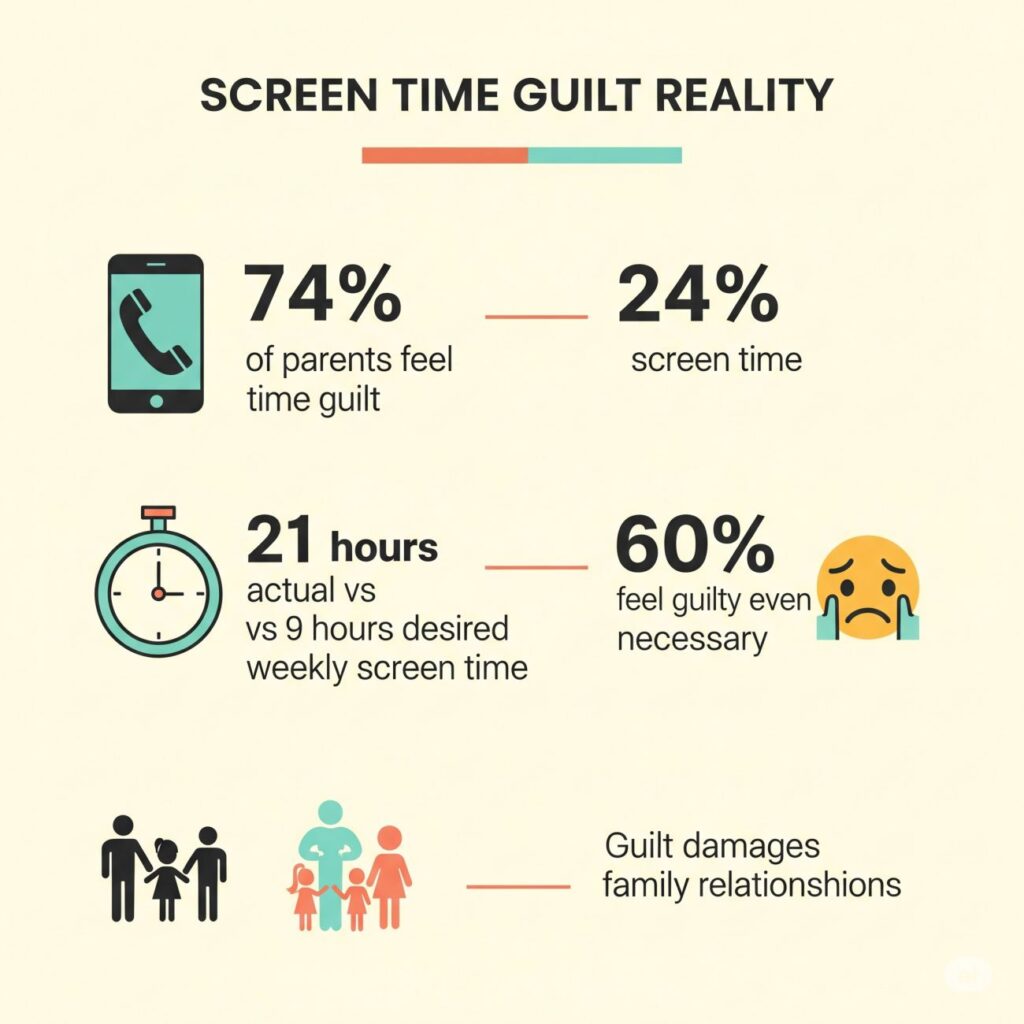
The Great Screen Time Hypocrisy
Here’s where it gets really interesting—and a little uncomfortable. While parents agonize over their children’s 21 hours of weekly screen time (compared to their preferred 9 hours), adults spend an average of 11 hours per day on screens themselves.
Let that sink in. That’s 77 hours per week for adults versus 21 hours for kids.
Yet somehow, we’ve convinced ourselves that our screen use is “necessary” while our children’s is “harmful.” We check emails during dinner, scroll social media while they play, and take work calls while they watch educational content—but we feel guilty when they need screens for entertainment, learning, or (gasp) so we can function as human beings.
Why Your Screen Time Guilt Is Backfiring
The research reveals something counterintuitive: parents who feel less guilt about screen time actually make better decisions about it.
Dr. Suzanne Barchers, Education Advisory Board Chair at Lingokids, notes that “parents who are largely free from guilt regarding their child’s screen time use are more focused on the quality of the content their child views rather than the amount of time they spend using screens.”
Meanwhile, guilt-ridden parents remain fixated on duration, missing opportunities to:
- Choose educational over mindless content
- Co-view and engage during screen time
- Use screens strategically for family harmony
- Model healthy digital habits themselves
| Guilt-Free Parents Focus On | Guilty Parents Focus On |
|---|---|
| Content quality | Time duration |
| Educational value | Breaking rules |
| Family needs | Perfect adherence |
| Strategic usage | All-or-nothing thinking |
| Modeling balance | Hiding their own use |
The Real Screen Time Truth
Here’s what the experts don’t want you to stress about: not all screen time is created equal, and context matters more than clock-watching.
Screen Time That Actually Helps Your Family:
Educational Co-Viewing – When you watch nature documentaries together and discuss what you see, that’s quality time, not screen time to feel guilty about.
Necessity-Based Usage – Using screens because you can’t afford childcare (25% of parents), can’t find childcare (34% of parents), or need to prevent a public meltdown (71% of parents) isn’t lazy parenting—it’s survival.
Connection Tools – Video calls with grandparents, virtual museum tours, or learning apps that teach letters and numbers serve important developmental and social functions.
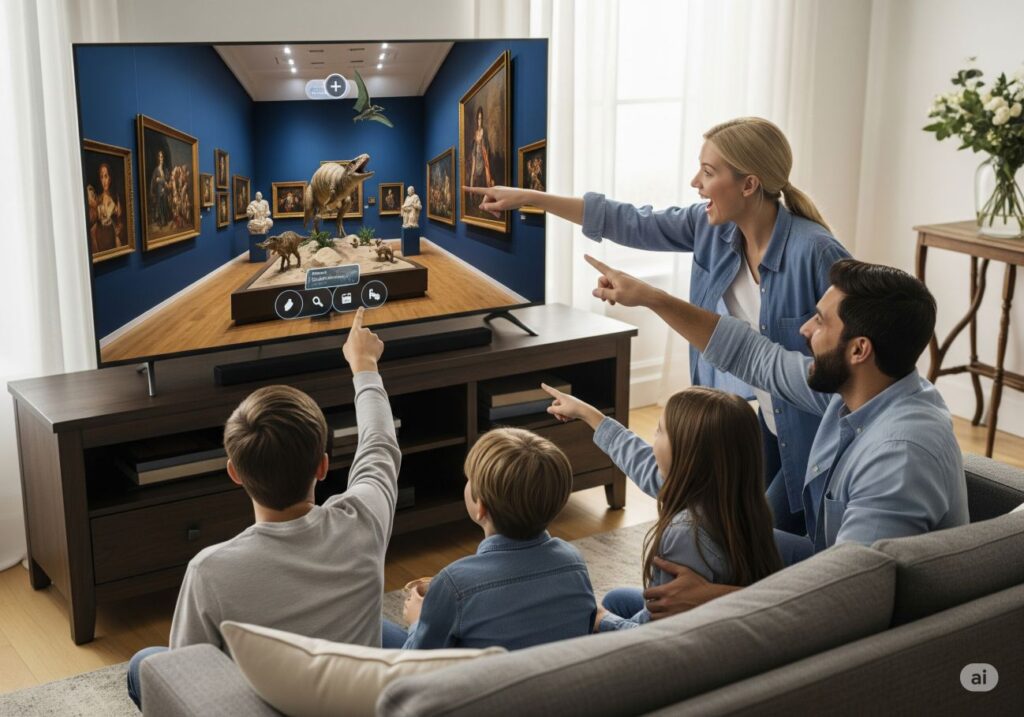
Breaking Free from the Screen Time Guilt Trap
Step 1: Reframe Your Perspective Instead of asking “How much is too much?” ask “Is this serving our family right now?” Sometimes the answer is yes—you need 20 minutes to prepare dinner. Sometimes it’s no—they’re mindlessly scrolling when they could be playing outside.
Step 2: Focus on Quality Over Quantity Dr. Elizabeth Adams, researcher on screen time and child development, emphasizes: “Using screen time to give a parent a break is a different goal. It’s not a bad goal, but it’s a different goal.”
Choose content that:
- Engages rather than numbs
- Teaches rather than just entertains
- Connects rather than isolates
Step 3: Model What You Want to See The most powerful screen time strategy? Manage your own use mindfully. Children learn more from what they observe than what they’re told.
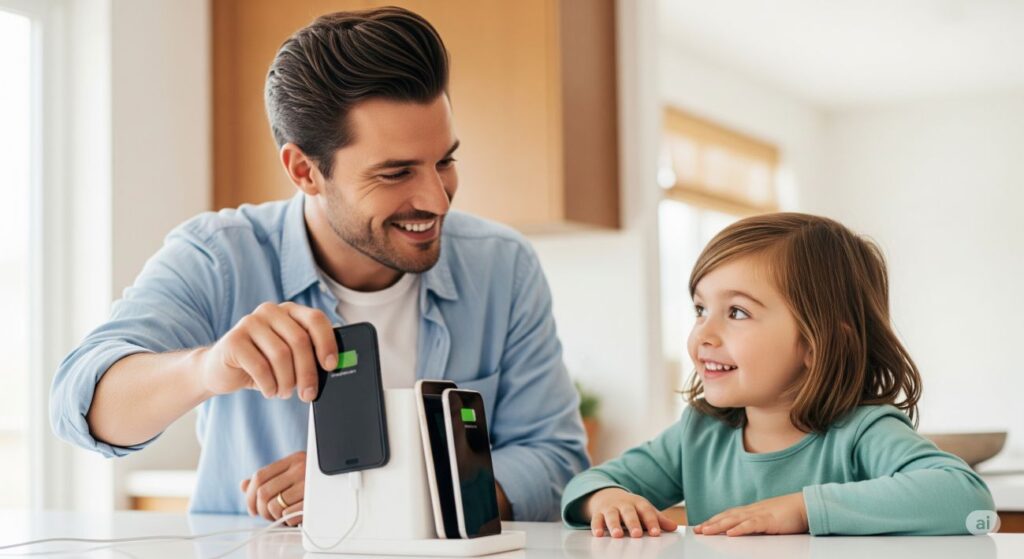
Your New Screen Time Strategy (Guilt-Free Edition)
For Ages 2-5: Co-view high-quality content. The American Academy of Pediatrics recommends this for a reason—your presence transforms passive consumption into active learning.
For Ages 6-12: Establish “purposeful” screen time. Educational content, creative apps, and video calls with family count differently than mindless YouTube scrolling.
For All Ages: Create screen-free zones (bedrooms) and times (meals), but don’t stress if you break these rules occasionally for family harmony or necessity.
The 80/20 Rule: Aim for intentional choices 80% of the time. The other 20%? Give yourself grace for survival mode, sick days, and those moments when Bluey saves your sanity.
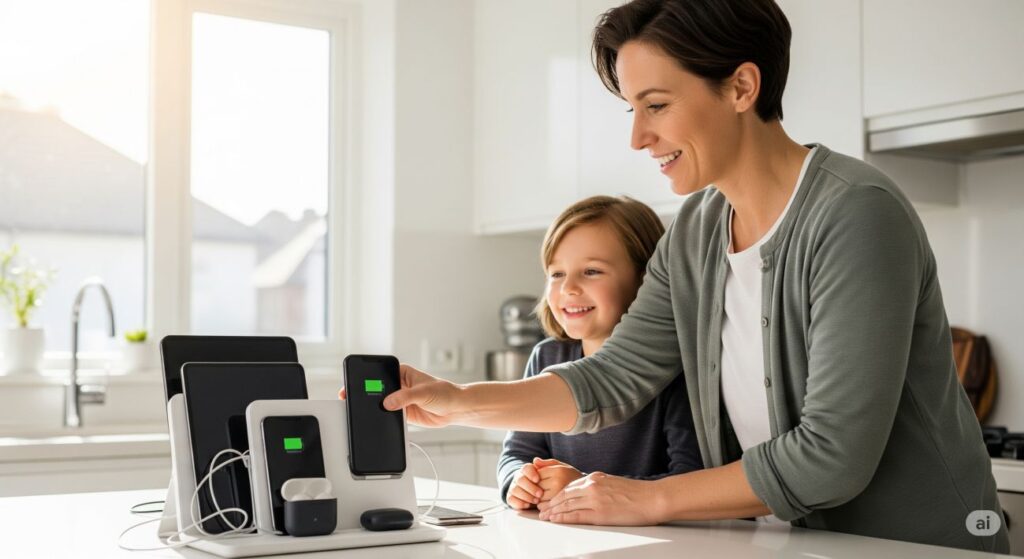
The Bottom Line: Your Mental Health Matters Too
Here’s the screen time truth that matters most: a stressed, guilty parent trying to enforce perfect screen time limits is worse for child development than a calm parent making thoughtful, flexible decisions about technology.
Research consistently shows that parental stress negatively impacts children more than reasonable screen use ever could. When you release the guilt and make intentional choices—whether that’s an educational app, a family movie night, or yes, 30 minutes of Peppa Pig so you can have a shower—you’re modeling emotional regulation and practical problem-solving.
Your children need you to be present, patient, and mentally healthy more than they need you to be a screen time perfectionist.
The next time screen time guilt creeps in, ask yourself:
- Is this serving a purpose right now?
- Am I being intentional about content?
- Am I taking care of my own needs so I can be present for my family?
If the answer is yes, then you’re doing exactly what good parents do—making the best decisions you can with the information and energy you have.
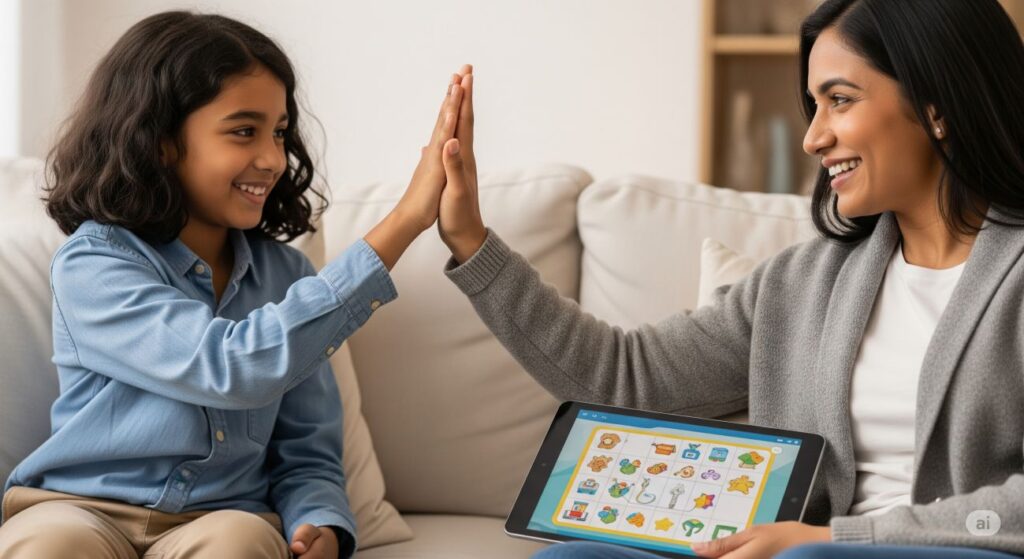
Take Action: Share Your Story
What’s your best tip for managing screen time without the guilt? Have you discovered content that truly adds value to your family’s day? Share your experiences in the comments below—because real parents supporting each other is infinitely more valuable than perfect guidelines from people who’ve never dealt with a toddler meltdown during a Zoom call.
Remember: You’re not raising screen time statistics. You’re raising humans who need to navigate a digital world thoughtfully. And that starts with you modeling self-compassion, practical decision-making, and the radical idea that sometimes, good enough parenting is exactly enough.













